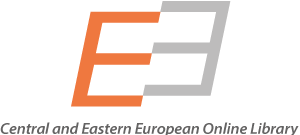Divided past for the divided future!? War 1992-1995 in the contemporary history textbooks of Bosnia and Herzegovina / Podijeljena prošlost za podijeljenu budućnost!? Rat 1992-1995. u aktuelnim bosanskohercegovačkim udžbenicima historije
Keywords:
Bosnia and Herzegovina, war 1992-1995, history textbooks, war crimes, mass atrocitiesAbstract
Comparative analysis of the three history textbooks and additional teaching material for the final grade of elementary schools in Bosnia and Herzegovina showed again that monoperspective approach is the trend which is spread on the themes of the war 1992-1995. Contents of the history textbooks are politicized as well as the need to bring them back into the curricula and educational practice even though they have never been expelled from there. Bearing in mind that the term national history is differently interpreted in each of the parallel existing educational systems is expected that explanation of the nature of the war is different. Textbooks are written according to the specially created curricula and with their contents they are trying to answer to the projected learning outcomes, in which we can not find the universal values. Once forbidden and erased offensive contents such as aggression and civil war came back into the history textbooks without any sanction. Only positive improvement is that language of hatred and stereotypes that were part of the textbooks in 90-ties are not directly visible now, but they can be read between the lines or through the silence about the events which need to be part of the complete narrative. It is not surprising that textbook authors act like they are bz the Swedish table and they pick up only what they like, or what is nationally and politically correct and which is an a line of the needs of own people. Selective presentation of the facts, emphasizing the victim of its own nation and minimizing or complete ignorance of the victims of other nations, avoiding stating the quilt of the individuals from own nation, etc. War as a process which completely dehumanizes humanity is not presented in that light, and values of peace, freedom and cooperation we can not read at all in the analyzed textbook lessons. That is why is necessary to ask a question what is the message that we send to our students? What is the outcome of the teaching about the war 1992-1995? Bosnia and Herzegovina is one of the countries who is mentioned in the Recommendation of the Council of Europe about history teaching in conflict and post-conflict areas. The text of Recommendation is useful to remind us what is the role and aim of history teaching, and multuperspectivity is a way to overcome the divisions and different interpretations that we have in our school systems. Analyzing the contemporary history textbooks and bringing the examples of narratives and putting them into one line we create a multiperspectve picture which can be completed, adjusted and critically assessed. What has been avoided to be explained in one, it is described in the other, etc. Consensus for common approach in teaching this very sensitive period in schools by the local historians which has been predicted by the Parliamentary assembly of the Council of Europe is still very far awas and it seems almost unreachable while we have education of all levels organized by ethnonational principles and while learning outcomes about the wars is a hatred for others, different, aggressors, to those who started the war, to those who committed the crimes. What we have as an opportunity is a multiperspectivity. Experts for textbooks in divided and post-conflict societies beside short term measures like moratorium for teaching sensitive issues about the conflict or removing offensive contents from the textbooks – those were already implemented in out country – suggest long term joint project for the creating textbooks like French-German or Polish-German history textbooks, or as additional teaching materials such are projects of EUROCLIO and CDRSEE. Great example was given by Dubravka Stojanović on teaching about Srebrenica with three suggested levels of work: 1. bringing the exact data (names, numbers, events), 2. confronting the historical sources (newspapers, documents, etc) and 3. using memories and personal stories of witnesses. This can definitely be a start. Further step would be a textbook made like the common Israeli-Palestinian textbook in which three parallel columns exist. Left with the narratives from Israeli perspective, right with the narratives from Palestinian perspective and muddle one which is empty for the students to fill it up by themselves. In our case we would have a textbook with more columns but effect would be better than divisions and history manipulations what we have now.Downloads
Download data is not yet available.
Downloads
Published
2019-04-11
How to Cite
Forić-Plasto, M. (2019). Divided past for the divided future!? War 1992-1995 in the contemporary history textbooks of Bosnia and Herzegovina / Podijeljena prošlost za podijeljenu budućnost!? Rat 1992-1995. u aktuelnim bosanskohercegovačkim udžbenicima historije. Journal of the Faculty of Philosophy in Sarajevo (History, History of Art, Archeology) / Radovi (Historija, Historija Umjetnosti, Arheologija), ISSN 2303-6974 on-Line, 6, 231–257. Retrieved from https://mail.epub.ff.unsa.ba/subds/ejournals/index.php/radovihhua/article/view/33




